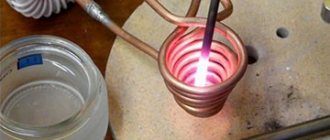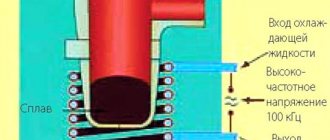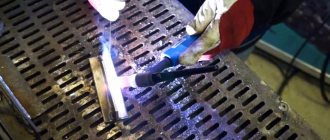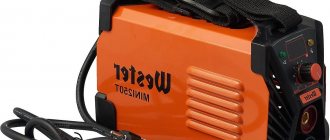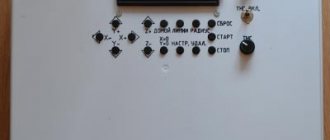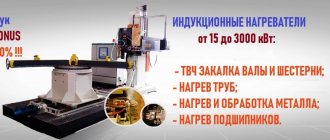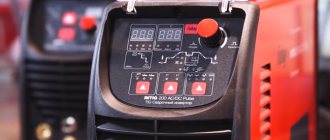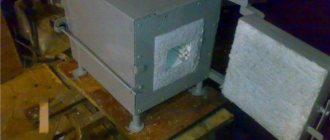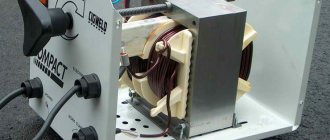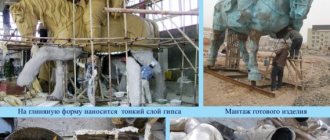Induction heating boilers are devices that are characterized by very high efficiency. They can significantly reduce energy costs compared to traditional devices equipped with heating elements.
Industrial production models are not cheap. However, any home craftsman who owns a simple set of tools can make an induction heater with his own hands. To help him, we offer a detailed description of the principle of operation and assembly of an effective heater.
Advantages of Induction Heater
Induction heaters are gaining popularity among consumers every day due to the following advantages:
- high efficiency rate;
- the unit operates almost silently;
- induction boilers and heaters are considered quite safe in comparison with gas equipment;
- the heater operates fully automatically;
- the equipment does not require constant maintenance;
- due to the tightness of the device, leaks are excluded;
- Due to vibrations of the electromagnetic field, scale formation becomes impossible.
Also, the advantages of this type of heater include the simplicity of its design and the availability of materials for assembling the device with your own hands.
Features of operation
Homemade heater assembly is only half the battle. Equally important is the correct operation of the resulting structure. Initially, each such device poses a certain danger, since it is not able to independently control the heating level of the coolant. In this regard, each heater requires certain modifications, that is, installation and connection of additional control and automatic devices.
First of all, the pipe outlet is equipped with a standard set of safety devices - a safety valve, a pressure gauge and an air vent device. It should be remembered that induction water heaters will work normally only if there is forced water circulation. A gravity flow circuit will very quickly lead to overheating of the element and destruction of the plastic pipe.
To avoid such situations, a thermostat is installed in the heater, connected to an emergency shutdown device. Experienced electrical engineers use for these purposes thermostats with temperature sensors and relays that turn off the circuit when the coolant reaches the set temperature.
Homemade structures are characterized by rather low efficiency, since instead of free passage, there is an obstacle in the way of water in the form of wire particles. They almost completely block the pipe, causing increased hydraulic resistance. In emergency situations, damage and rupture of the plastic may occur, after which hot water will certainly lead to a short circuit. Typically, such heaters are used in small rooms as an additional heating system during the cold season.
The use of induction coils instead of traditional heating elements in heating equipment has significantly increased the efficiency of units with lower electricity consumption. Induction heaters appeared on sale relatively recently, and at fairly high prices. Therefore, craftsmen did not ignore this topic and figured out how to make an induction heater from a welding inverter.
Induction heater operating diagram
The inductor type heater contains the following elements.
- Current generator. Thanks to this module, alternating current from the household electrical network is converted into high-frequency current.
- Inductor. Made from copper wire twisted into a coil to create a magnetic field.
- A heating element. It is a metal pipe placed inside the inductor.
All of the above elements, interacting with each other, work according to the following principle. The high-frequency current generated by the generator is supplied to an inductor coil made of copper conductor. The high frequency current is converted by the inductor into an electromagnetic field. Next, the metal pipe located inside the inductor heats up due to the effect of vortex flows arising in the coil. The coolant (water) passing through the heater picks up thermal energy and transfers it to the heating system. The coolant also acts as a cooler for the heating element, which extends the “life” of the heating boiler.
Below is an electrical diagram of an induction heater.
The following photo shows how an induction metal heater works.
Important! If you touch two turns of the inductor with a heated part, an interturn short circuit will occur, which will instantly burn out the transistors.
What can be made from a welding inverter
Many people are attracted to electric heating because it works autonomously and does not require constant supervision. The negative side of such heating boilers is the cost and technical requirements.
In some places they simply cannot be used. But many owners are not afraid of this, and they believe that it is the ease of operation that covers all the shortcomings.
Especially when new types of electric boilers with inductive coils, rather than heating elements, appeared on the sales markets.
They heat up the coolant with instant speed and economically heat the building, according to the owners of the units. The new type of boiler is called induction. The new type of heaters is easy to use. They are considered safe, in comparison with gas heaters, there is no soot and soot, which cannot be said about devices with solid fuel.
And the most important advantage is that there is no need to prepare solid fuel (coal, firewood, pellets). And as soon as induction heaters appeared, there were immediately craftsmen who, in order to save money, were trying to create such an installation with their own hands.
In this article we will help you design a heating device yourself.
A device where metal and similar products are heated without contact is called an induction heater. The operation is controlled by an alternating induction field acting on the metal, and the currents inside generate heat.
High frequency currents affect the product in addition to insulation, which is why the design is unusual compared to other types of heating.
Today's induction heaters contain semiconductor frequency reducers. This type of heating is widely used in the heat treatment of surfaces made of steel and various compounds and alloys.
The compactness of equipment is used in innovative technologies, while there is a huge economic effect. A variety of models help implement flexible and automated combinations, including all-round transistor frequency reducers and connection blocks when an induction system is preferred.
Description
A typical heating element includes the following components:
- A heating element in the form of a rod or metal tube.
- An inductor is a copper wire that frames a coil in turns. During operation, it acts as a generator.
- Alternator. A separate design where standard current is converted into a high frequency value.
In practice, induction units have been used recently. Theoretical studies are much ahead. This can be explained by one obstacle - obtaining high frequency magnetic fields. The fact is that using low-frequency settings is considered ineffective. As soon as high-frequency current generators appeared, the problem was solved.
HDTV generators have passed their evolutionary period; from lamp ones to modern models based on IGBT. Now they are more efficient, lighter in weight and smaller in size. Their frequency limitation is 100 kHz due to dynamic losses of transistors.
Operating principle and scope
The generator increases the frequency of the current and transfers its energy to the coil. The inductor converts high-frequency current into an alternating electromagnetic field. Electromagnetic waves change at high frequencies.
Heating occurs due to the heating of eddy currents, which are provoked by alternating eddy vectors of the electromagnetic field. Energy is transmitted with almost no losses with high efficiency and enough energy to heat the coolant and even more.
The battery energy is transferred to the coolant, which is located inside the pipe. The coolant, in turn, is the coolant of the heating element. Due to this, the service life increases.
Industry is the most active consumer of induction heaters, since many designs involve high heat treatment. Their use increases the strength of the product.
High-power devices are installed in high-frequency forges.
Forging and pressing companies, using such units, increase labor productivity and reduce wear of dies, and reduce metal consumption. Installations with through heating can cover a certain number of workpieces at once.
When surface hardening parts, the use of such heating makes it possible to increase wear resistance several times and obtain a significant economic effect.
Advantages and disadvantages
Pros:
- High heating quality.
- High control precision and flexibility.
- Reliability. Can work autonomously, having automation.
- Warms any liquid.
- The efficiency of the device is 90%.
- Long service life (up to 30 years).
- Easy to install.
- The heater does not collect scale.
- Due to automation, energy savings.
Minuses:
- High cost of models with automation.
- Dependence on electricity supply.
- Some models are noisy.
How to do it yourself?
Let's say you decide to make an induction heater yourself, for this we prepare a pipe, pour small pieces of steel wire (9 cm in length) into it.
The pipe can be plastic or metal, most importantly, with thick walls. Then, it is closed with special adapters on all sides.
Next, we wind up to 100 turns of copper wire onto it and place it along the central part of the tube. The result is an inductor. We connect the output part of the inverter to this winding. We use a thermostat as an assistant.
The pipe acts as a heater.
Assembly and installation of the system
The inductor cannot be connected to the welding machine terminals intended for connecting welding cables. If you do this, the unit will simply fail. To adapt the inverter to work with an induction heater, a rather complex modification of the device will be required, which requires, first of all, knowledge in radio electronics.
In a nutshell, this modification looks like this: the coil, namely its primary winding, needs to be connected after the high-frequency converter of the inverter instead of the built-in induction coil of the latter. In addition, you will need to remove the diode bridge and solder the capacitor unit.
How to convert a welding inverter into an induction heater can be found in this video.
Induction furnace for metal
To make an induction heater from a welding inverter, you will need the following materials.
- Inverter welding machine. It would be good if the unit has a smooth current control function.
- A copper tube with a diameter of about 8 mm and a length sufficient to make 7 turns around a workpiece 4-5 cm in diameter. In addition, after the turns there should be free ends of the tube about 25 cm long.
To assemble the oven, follow these steps:
- Select any part with a diameter of 4-5 cm, which will serve as a template for winding a coil of copper tube. This can be a wooden round piece, a metal or plastic pipe.
- Take a copper tube and rivet one end with a hammer.
- Fill the tube tightly with dry sand and rivet the other end. Sand will prevent the tube from breaking when twisted.
- Make 7 turns of the tube around the template, then cut off the ends and pour out the sand.
- Connect the resulting coil to the converted inverter.
Induction water heater
To assemble the heating boiler, the following structural elements will be required.
- Inverter. The device is selected with the power required for the heating boiler.
- Thick-walled pipe (plastic), maybe PN brand. Its length should be 40-50 cm. The coolant (water) will pass through it. The inner diameter of the pipe must be at least 5 cm. In this case, the outer diameter will be 7.5 cm. If the inner diameter is smaller, then the boiler performance will be low.
- Steel wire. You can also take a metal rod with a diameter of 6-7 mm. Small pieces (4-5 mm) are cut from wire or rod. These segments will serve as the heat exchanger (core) of the inductor. Instead of steel pieces, you can use a smaller diameter all-metal tube or a steel auger.
- PCB sticks or rods on which the induction coil will be wound. The use of PCB will protect the pipe from the heated coil, since this material is resistant to high temperatures.
- Insulated cable with a cross section of 1.5 mm 2 and a length of 10-10.5 meters. The cable insulation must be fibre, enamel, fiberglass or asbestos.
Do-it-yourself HDTV from a welding inverter - Metalworker's Guide
Electric heating devices are extremely convenient to use.
They are much safer than any gas equipment, they do not produce soot and soot, unlike units running on liquid or solid fuel, and finally, they do not need to prepare firewood, etc.
The main disadvantage of electric heaters is the high cost of electricity. In search of savings, some craftsmen decided to make an induction heater with their own hands. They received excellent equipment that requires much less expense to operate.
Working principle of induction heating
An induction heater uses the energy of an electromagnetic field, which the heated object absorbs and converts into heat. To generate a magnetic field, an inductor is used, i.e. a multi-turn cylindrical coil. Passing through this inductor, an alternating electric current creates an alternating magnetic field around the coil.
A homemade inverter heater allows you to heat quickly and to very high temperatures. With the help of such devices you can not only heat water, but even melt various metals
If a heated object is placed inside or near the inductor, it will be penetrated by the flux of the magnetic induction vector, which constantly changes over time.
In this case, an electric field arises, the lines of which are perpendicular to the direction of the magnetic flux and move in a closed circle.
Thanks to these vortex flows, electrical energy is transformed into thermal energy and the object heats up.
Thus, the electrical energy of the inductor is transferred to the object without the use of contacts, as happens in resistance furnaces.
As a result, thermal energy is spent more efficiently, and the heating rate increases noticeably. This principle is widely used in the field of metal processing: melting, forging, soldering, surfacing, etc.
With no less success, a vortex induction heater can be used to heat water.
Induction heat generator in a heating system
To organize heating of a private house using an induction heater, the easiest way is to use a transformer, which consists of a primary and secondary short-circuited winding.
Eddy currents in such a device arise in the internal component and direct the resulting electromagnetic field to the secondary circuit, which simultaneously serves as a housing and a heating element for the coolant.
Please note that not only water, but also antifreeze, oil and any other conductive media can act as a coolant during induction heating. In this case, the degree of purification of the coolant does not matter much.
The inverter heater is compact in size, operates silently and can be installed in almost any suitable location that meets safety requirements
An induction heating boiler is equipped with two pipes.
The lower pipe, through which the cold coolant will flow, must be installed at the inlet section of the pipeline, and at the top, a pipe is installed that transfers the hot coolant to the supply section of the pipeline. When the coolant in the boiler heats up, hydrostatic pressure arises and the coolant enters the heating network.
There are a number of advantages to using an induction heater that should be mentioned:
- the coolant constantly circulates in the system, which prevents the possibility of overheating;
- the induction system vibrates, as a result, scale and other sediments are not deposited on the walls of the equipment;
- the absence of traditional heating elements allows the boiler to be operated at high intensity without fear of frequent breakdowns;
- the absence of detachable connections eliminates leaks;
- the operation of the induction boiler is not accompanied by noise, so it can be installed in almost any suitable room;
- During induction heating, no hazardous fuel decomposition products are released.
Safety, quiet operation, the ability to use a suitable coolant and the durability of the equipment have attracted many homeowners. Some of them are thinking about the possibility of making a homemade induction heater.
How to make an induction heater yourself?
Making such a heater yourself is not a very difficult task that even a novice craftsman can handle. To get started, you should stock up on:
- a piece of plastic pipe with thick walls, which will become the heater body;
- steel wire with a diameter of no more than 7 mm;
- adapters for connecting the heater body to the heating system of the house;
- a metal mesh that will hold pieces of steel wire inside the case;
- copper wire to create an induction coil;
- high frequency inverter.
First you need to prepare the steel wire. To do this, simply cut it into pieces about 5 cm long.
The bottom of a piece of plastic pipe is covered with a metal mesh, pieces of wire are poured inside, and the top of the body is also covered with a metal mesh. The housing must be completely filled with pieces of wire.
In this case, wire made not only from stainless steel, but also from other metals may be acceptable.
Then you should make an induction coil. A prepared plastic case is used as a base, onto which 90 turns of copper wire are carefully wound.
After the coil is ready, the housing is connected to the heating system of the house using adapters. After this, the coil is connected to the network through a high-frequency inverter. It is considered quite advisable to make an induction heater from a welding inverter, since this is the simplest and most cost-effective option.
Most often, in the manufacture of homemade vortex induction heaters, inexpensive models of welding inverters are used, since they are convenient and fully comply with the requirements
It should be noted that you should not test the device if no coolant is supplied to it, otherwise the plastic case may melt very quickly.
An interesting version of an induction heater made from a hob is presented in the video:
Some useful safety tips
To increase the safety of the structure, it is recommended to insulate the exposed areas of the copper coil.
An induction heater is recommended only for closed heating systems in which forced circulation of coolant is carried out using a pump.
The induction heating system should be placed at least 30 cm from walls and furniture and at least 80 cm from the ceiling or floor.
DIY induction heaters - from a welding inverter and more, diagram
Many people are attracted to electric heating because it works autonomously and does not require constant supervision. The negative side of such heating boilers is the cost and technical requirements.
In some places they simply cannot be used. But many owners are not afraid of this, and they believe that it is the ease of operation that covers all the shortcomings.
Especially when new types of electric boilers with inductive coils, rather than heating elements, appeared on the sales markets.
They heat up the coolant with instant speed and economically heat the building, according to the owners of the units. The new type of boiler is called induction. The new type of heaters is easy to use. They are considered safe, in comparison with gas heaters, there is no soot and soot, which cannot be said about devices with solid fuel.
And the most important advantage is that there is no need to prepare solid fuel (coal, firewood, pellets). And as soon as induction heaters appeared, there were immediately craftsmen who, in order to save money, were trying to create such an installation with their own hands.
In this article we will help you design a heating device yourself.
A device where metal and similar products are heated without contact is called an induction heater. The operation is controlled by an alternating induction field acting on the metal, and the currents inside generate heat.
High frequency currents affect the product in addition to insulation, which is why the design is unusual compared to other types of heating.
Today's induction heaters contain semiconductor frequency reducers. This type of heating is widely used in the heat treatment of surfaces made of steel and various compounds and alloys.
| Heating systems have become more advanced, thanks to induction coils that replaced traditional heating elements. Their efficiency has increased significantly, and energy consumption, on the contrary, has decreased. These devices have not yet found widespread use, mainly due to their high cost. Using available materials, home craftsmen construct an induction heater from a welding inverter not only for heating systems, but also for heating metal workpieces before processing them. Operating principleFor a long time, theoretical developments in the field of induction heating could not find practical application, since the low frequency did not give the desired effect. Significant changes appeared after the problem regarding the generation of high-frequency magnetic fields was resolved. After this, a real possibility arose of using induction elements in heating systems. The design of a typical device consists of the following parts:
All these components are in close interaction with each other. The high frequency current generated by the generator hits the induction coil and turns into an electromagnetic field. The vortex flows arising in the coil act on the metal pipe placed inside and heat it up. Water used as a coolant passes through the heating element, heats up and transfers thermal energy to the entire heating system. At the same time, the water cools the heating element, extending its service life. Homemade heater deviceIt is recommended to consider a classic induction device using the example of a water heater design for a heating system. Such schemes are most often used in dachas and country houses. The manufacture of the device begins with an inductor. To do this, copper wire must be wound in one row, giving it an initially cylindrical shape. Each turn is isolated from its neighbor, eliminating contacts between them. The number of turns that ensures normal operation is on average 80-100. Copper conductors can have different cross-sections - from 2.5 to 4 mm2. The core is the heating pipe itself, but in practice this option does not give the desired effect. Therefore, in order to make the heating of the coolant more intense, it is recommended to use a plastic pipe of a certain length. Its internal space is filled with steel wire D 5-6 mm, cut into short pieces. In this case, due to induction, the wire flowing around the water begins to heat up. The heat exchange area increases significantly, and the coolant heats up much faster. To prevent the wire cuttings from being washed away by the water flow, the ends of the pipe section are limited by protection made of steel mesh. The connection between the inductor and the inverter can be done in different ways. Some specialists make an additional intermediate transformer. Then an inductor along with a capacitor is connected to its secondary winding.
In all cases, you cannot use the positive and negative terminals of the inverter intended for welding. Their output is rectified voltage, which is accompanied by high-frequency pulsations. Under its influence, a working magnetic field will not appear, and the inductor will overheat and burn out. The inverter will have to be redone, which in itself is quite difficult, since knowledge and skills in working with radio-electronic circuits will be needed. Induction heater for metal partsThe properties of electromagnetic induction are used not only in heating systems. This phenomenon is successfully used in the design of heating furnaces designed to work with all types of metals. To make an induction heater from a welding inverter, you must first stock up on the following components:
The structure is assembled in the following order:
|
Operating principle of a water heating system
The source of the working electromagnetic field of an induction heater is an inductor, which is a coil made of conductive material. The inductor of the induction heater is connected to a high frequency alternating current source. A metal object is placed inside the coil, where the field is most intense, to serve as a magnetic core.
Under the influence of the inductor field in the thickness of the steel core, the grains of the metal structure (domains) are magnetized. The magnetic induction vector of each domain changes its direction with the frequency of the external field. As a result, so-called eddy currents are induced, quickly heating the metal of the core.
Now imagine that the role of the core is played by a steel heating pipe through which the coolant moves. Receiving energy as a result of induction heating, the pipe gives off heat to the circulating fluid. This is how the water heating system warms up.
Operating principle
For a long time, theoretical developments in the field of induction heating could not find practical application, since the low frequency did not give the desired effect. Significant changes appeared after the problem regarding the generation of high-frequency magnetic fields was resolved. After this, a real possibility arose of using induction elements in heating systems.
The design of a typical device consists of the following parts:
- Current generator. Converts home network voltage into high-frequency electric current.
- Inductor. It is a coil made of copper wire, in which a magnetic field is formed under the influence of current.
- A heating element. As a rule, this is a piece of metal pipe placed inside the inductor. It heats itself and transfers thermal energy to the heating system.
All these components are in close interaction with each other. The high frequency current generated by the generator hits the induction coil and turns into an electromagnetic field. The vortex flows arising in the coil act on the metal pipe placed inside and heat it up. Water used as a coolant passes through the heating element, heats up and transfers thermal energy to the entire heating system. At the same time, the water cools the heating element, extending its service life.
High frequency voltage source
Creating a high-frequency power supply for an induction heater with your own hands, although it does not belong to the category of impossible tasks, is still not within the power of everyone. And here a ready-made device, an ordinary household welding inverter, can come to the rescue.
From information about the design of the welding inverter, it is known that it generates an alternating voltage with a frequency of up to several tens of kilohertz.
That is, a welding inverter is a ready-made powerful high-frequency current source that can be used to power an inductor. Numerous examples of the implementation of this idea confirm the possibility of creating an installation for induction heating of metal from a welding inverter.
Working diagram
The heater includes the following components:
- An inverter unit designed for a voltage of 220…240 V, with a current of at least 10 A.
- Three-wire cable line (one wire is ground) with a normally open switch.
- Water cooling system (it is highly advisable to use water purification filters).
- A set of coils that differ in internal diameters and lengths (for limited volumes of work, you can get by with one coil).
- Heating block (you can use a module with power transistors produced by Chinese companies Infineon or IGBT).
- Damper circuit with several Semikron capacitors.
The high-frequency oscillation generator is the same as that of the basic inverter
It is important that its operational characteristics fully comply with those indicated in the previous sections
After assembly, the unit is grounded and the heating induction coil is connected to the inverter power supply using connecting cables.
Approximate operational capabilities of a homemade metal induction heater:
- Highest heating temperature, °C – 800.
- The minimum power of the inverter is 2 kVA.
- PV switch-on duration, no less than 80.
- Operating frequency, kHz (adjustable) - 1.0...5.0.
- Internal diameter of the coil, mm – 50.
It should be noted that such an inductor will require a specially prepared workplace - a waste water tank, a pump, and reliable grounding.
Connection to inductor
First, we should talk about the design of the inductor itself. It is recommended to make it in the form of a cylindrical coil wound in one row with copper wire. The turns must be insulated from each other.
The recommended number of turns is from 80 to 100. The wire cross-section is usually 2.5 - 4 mm2. The heating pipe itself can be used as a core, but practical experiments have shown that the water heats up poorly. Therefore, a different core design was tried.
For more intense heating of the coolant, it is proposed to use a piece of plastic pipe filled with scraps of steel wire with a diameter of 5–6 mm as a core.
With this scheme, induction heating occurs of the wire flowing around the coolant. Due to the increase in heat exchange area, the water heats up much more intensely. The section of pipe with wire should be limited by steel mesh on both sides to prevent scraps from getting into the heating system.
As for the actual connection of the welding inverter, the recommendations of those who made an induction heater with their own hands are somewhat heterogeneous.
So, some of the advice comes down to making an additional intermediate transformer, in the secondary winding of which an inductor with a capacitor is connected.
Another part of the craftsmen simply wind one turn of copper wire onto the toroidal high-frequency transformer of the welding inverter and connect the inductor directly to it.
In any case, you should not use the + and - terminals of the welding inverter, from which welding is carried out . The voltage on them is rectified, with superimposed high-frequency pulsations. The constant component of the welding voltage will simply overheat the inductor without creating a working field.
Features of Vortex Induction Boiler
We are already familiar with the operating principle of an induction heating device. There is a variation of it: a vortex induction boiler or VIN, which operates somewhat differently.
Distinctive features of VIN
Like its induction counterpart, it operates on high-frequency voltage, so it must be equipped with an inverter. The peculiarity of the VIN device is that it does not have a secondary winding.
Its role is performed by all metal parts of the device. They are necessarily made from materials that exhibit ferromagnetic properties. Thus, when current is applied to the primary winding of the device, the electromagnetic field strength increases sharply.
It, in turn, generates a current, the strength of which rapidly increases. Eddy currents provoke magnetization reversal, as a result of which all ferromagnetic surfaces heat up very quickly, almost instantly.
Vortex devices are quite compact, but due to the use of metal, their weight is high. This has the added advantage that all massive elements of the housing take part in the heat exchange. Thus, the efficiency of the unit approaches 100%.
This feature of the device must be taken into account if you decide to make a VIN boiler yourself. It can only be made of metal, plastic should not be used.
The main difference between a vortex induction boiler is that its body acts as a secondary winding. That's why it is always made of metal
How to assemble a vortex induction device?
As we already know, such a boiler differs from its induction counterpart, however, making it yourself is just as easy. True, now you will need welding skills, because the device must be assembled only from metal parts.
To work you will need:
- Two pieces of thick-walled metal pipe of equal length. Their diameters must be different, so that one part can be placed inside another.
- Winding (enameled) copper wire.
- Three-phase inverter, maybe from a welding machine, but as powerful as possible.
- Casing for thermal insulation of the boiler.
Now you can get to work. We start by making the body of the future boiler. We take a larger diameter pipe and insert the second part inside. They need to be welded one into the other so that there is some distance between the walls of the elements.
The resulting part in cross-section will resemble a steering wheel. A steel sheet with a thickness of at least 5 mm is used as the base and cover of the housing.
The result is a hollow cylindrical tank. Now you need to cut into its walls the pipes for supplying cold and discharging hot liquid. The configuration of the pipe and its diameter depend on the pipes of the heating system; additional adapters may be needed.
After this, you can start winding the wire. It is carefully wound onto the boiler body under sufficient tension.
Schematic diagram of a homemade vortex-type induction boiler
Actually, the wound wire will serve as the heating element, so it is advisable to cover the body of the device with a heat-insulating casing. This way it will be possible to retain maximum heat and, accordingly, increase the efficiency of the device and make it safe.
Now you need to connect the boiler to the heating system. To do this, the coolant is drained, the required length of the pipe is cut off and the device is welded in its place.
All that remains is to power the heating device and do not forget to connect the inverter to it. The device is ready for use. But before testing, you need to fill the line with coolant.
You don't know which coolant to choose to fill the circuit? We recommend that you familiarize yourself with the characteristics of various coolants and recommendations for choosing the optimal type of fluid for the heating circuit.
Only after pumping coolant into the system carry out a test run.
First you need to run the device at minimum power and carefully monitor the quality of the welds. If everything is in order, we increase the power to maximum.
On our website there is another instruction for making an induction device that can be used to heat the coolant in the heating system. To familiarize yourself with the assembly process of an induction heater, follow this link.
Advantages
The real advantages of induction heaters are:
- reliable galvanic isolation of the heater circuits from the heating system;
- softer operating mode of the inductor compared to conventional electric heaters.
When describing heaters of this type, supporters of this type of heating usually cite a large list of other advantages, however, some of them are clearly fictitious.
So, you should not expect energy savings when using these heaters. The efficiency of conventional electric boilers is close to 100%; it is simply impossible to use the electricity consumed by the heater more efficiently.
Caring about the coziness and comfort of their home, every owner of a country house or cottage thinks about how to properly approach the choice of the optimal heating system.
The modern heating equipment market is very saturated with all kinds of boiler units. Many experts today advise installing a gas boiler, as it is an effective way to heat a home.
Homemade heater device
It is recommended to consider a classic induction device using the example of a water heater design for a heating system. Such schemes are most often used in dachas and country houses. The manufacture of the device begins with an inductor. To do this, copper wire must be wound in one row, giving it an initially cylindrical shape. Each turn is isolated from its neighbor, eliminating contacts between them.
The number of turns that ensures normal operation is on average 80-100. Copper conductors can have different cross-sections - from 2.5 to 4 mm 2. The core is the heating pipe itself, but in practice this option does not give the desired effect.
Therefore, in order to make the heating of the coolant more intense, it is recommended to use a plastic pipe of a certain length. Its internal space is filled with steel wire D 5-6 mm, cut into short pieces. In this case, due to induction, the wire flowing around the water begins to heat up. The heat exchange area increases significantly, and the coolant heats up much faster. To prevent the wire cuttings from being washed away by the water flow, the ends of the pipe section are limited by protection made of steel mesh.
The connection between the inductor and the inverter can be done in different ways. Some specialists make an additional intermediate transformer. Then an inductor along with a capacitor is connected to its secondary winding. In another embodiment, a copper wire in the amount of one turn is wound onto a high-frequency toroidal transformer present in the inverter. Next, an inductor is directly connected to it.
In all cases, you cannot use the positive and negative terminals of the inverter intended for welding. Their output is rectified voltage, which is accompanied by high-frequency pulsations. Under its influence, a working magnetic field will not appear, and the inductor will overheat and burn out. The inverter will have to be redone, which in itself is quite difficult, since knowledge and skills in working with radio-electronic circuits will be needed.
What it consists of and how it works
A heater of this type consists of the following structural units:
- the inductor is made of a certain number of turns of copper wire, which, in fact, form an electromagnetic field;
- the heating component is presented in the form of a metal pipe, which is located inside the inductor element;
- a generator that converts ordinary household energy into high-frequency current.
The interaction of these structural elements represents the operating principle of an induction heater, which consists of the following important points:
- the generator generates high-frequency current and transmits it to a coil of copper wire;
- the inductor, having received high-frequency current, converts it into an electromagnetic field;
- the heating element located inside the inductor is heated under the influence of vortex flows that arise from a change in the vector of the electromagnetic field;
- The coolant located inside the heating element is heated simultaneously with it and is transferred directly to the heating system.
This principle of operation of an induction heater, accordingly, carries with it the advantages of using a unit of this type.
Description
A typical heating element includes the following components:
- A heating element in the form of a rod or metal tube.
- An inductor is a copper wire that frames a coil in turns. During operation, it acts as a generator.
- Alternator. A separate design where standard current is converted into a high frequency value.
In practice, induction units have been used recently. Theoretical studies are much ahead. This can be explained by one obstacle - obtaining high frequency magnetic fields. The fact is that using low-frequency settings is considered ineffective. As soon as high-frequency current generators appeared, the problem was solved.
HDTV generators have passed their evolutionary period; from lamp ones to modern models based on IGBT. Now they are more efficient, lighter in weight and smaller in size. Their frequency limitation is 100 kHz due to dynamic losses of transistors.
Advantages
The main advantages of this type of heater include the following important points:
- high efficiency;
- does not require frequent maintenance;
- due to vibrations of the electromagnetic field, scale does not form;
- quiet operation;
- high level of security;
- the tightness of the unit prevents leaks;
- The operation of the heater is fully automated.
The main disadvantage of this type of heater is rightfully considered to be its high cost. But this drawback can be corrected if you carry out its design yourself.
It is also worth noting that assembling an induction heater with your own hands is carried out from very affordable parts, and their cost is not too high.
Advantages and disadvantages
Pros:
- Good heating quality.
- Greater control precision and flexibility.
- Strength. Will work independently, having automation.
- Warms any liquid.
- The efficiency of the device is 90%.
- Long service life (up to thirty years).
- Easy to install.
- The heating device does not collect scale.
- Due to automation, saving electrical energy.
Minuses:
- High price for models with automatic equipment.
- Dependence on electrical supply.
- Many models are noisy.
Required materials and tools
To mount an induction boiler from a welding inverter yourself, first of all, you need to prepare all the necessary tools and materials, which include the following:
- an inverter from a welding unit, which will greatly facilitate the installation of the heater;
- a plastic pipe with thick walls, which will be the body of the assembled device;
- stainless steel wire, which will become a heated element in the electromagnetic field;
- a metal mesh, the role of which will be to hold pieces of stainless wire inside the device;
- copper wire to create an inductor;
- circulation pump for continuous water supply;
- thermostat;
- adapters and ball valves for connecting the heater to heating;
- wire cutters.
Adviсe
- Open areas of the structure should be insulated for safety reasons.
- The use of an induction heater is recommended only in closed heating systems where a pump is installed to circulate the coolant.
- The structure with an induction heater is placed 800 mm from the ceiling, 300 mm from furniture and walls.
- Installing a pressure gauge will protect your structure.
- It is advisable to equip the heating device with an automatic control system.
- The heater should be connected to the electrical network using special adapters.
Heating systems have become more advanced, thanks to induction coils that replaced traditional heating elements. Their efficiency has increased significantly, and energy consumption, on the contrary, has decreased. These devices have not yet found widespread use, mainly due to their high cost. Using available materials, home craftsmen construct an induction heater from a welding inverter not only for heating systems, but also for heating metal workpieces before processing them.
Main stages of installation work
When all the necessary materials for the induction boiler have been prepared, you can proceed directly to its assembly.
In this case, it is necessary to strictly follow the entire sequence of work, which consists of the following steps:
- A metal mesh is attached to one end of the plastic pipe to prevent the heating wire pieces from falling through.
- An adapter for connection to the heating system is attached to the same end of the pipe.
- Stainless steel wire with a length of 1 to 6 cm is cut with wire cutters.
- The cut pieces of wire are placed tightly into a plastic pipe.
After the inverter is turned on, the inductor begins to form a magnetic field, which provokes the appearance of vortex flows. These currents heat up the cut pieces of wire well, which, in turn, heat the coolant.
Thus, we talked in detail about how to make an induction heater from a welding inverter with your own hands. We hope that our information will be useful to you when assembling the heater with your own hands.
Watch the video in which a specialist explains in detail how to make an induction heater based on a welding inverter with your own hands:
A few words about safety
Homemade induction boilers are usually not equipped with control and protection systems, which makes them unsafe. Therefore, before turning on the unit, you must make sure that the housing cavity is filled with coolant liquid.
If the polymer body of the heater is subjected to constant heating without being washed with coolant, it will simply melt, sometimes this leads not only to deformation of the heater, but also to its complete damage.
Units of this type are often used for heating and melting metals. The high temperatures generated by an induction heater require careful attention to safety issues
The loss of hot metal filler from the melted body can also be dangerous. In this case, you will have to almost completely dismantle the device and make a new heating element for it.
The connection to the power supply should be made via a separate cable from the panel. Of course, it is necessary to carefully cover all contacts with insulation. The inverter of the welding machine must also be grounded; this is an important point to ensure safety.
In this case, you will need a cable with a cross-section of at least four millimeters. Some experts recommend giving preference to a six-millimeter cable. To prevent overheating of a homemade induction heater due to a lack of water in the system, it is recommended to install an overpressure valve at the inlet of the heater.
An induction heating device takes up relatively little space, but it must be placed at a certain distance from the ceiling, walls, furniture, etc.
A homemade device of this type, not equipped with special protective equipment, is a potentially dangerous object that requires constant monitoring. Therefore, it is worth spending a little more money but purchasing the necessary devices.
At the same time, it doesn’t hurt to estimate the costs; perhaps purchasing a ready-made induction boiler will not cost much more. Industrial devices are usually equipped with all the necessary protection.
Features and step-by-step manufacturing technology of another version of a homemade induction boiler for a heating system are given here.
How to make a heater
Our homemade induction heater from a welding inverter will be slightly modified compared to the prototype to make it easier to manufacture. To create an electromagnetic field outside the inductor, you will need a serious coil with a huge number of turns, and besides, bending a pipe in the form of a coil is not so easy. Therefore, it is better to place a straight pipe inside the induction coil so that it acts as a core.
Logically, the pipe should be metal, but in a homemade installation with a small inductor it will heat the coolant very weakly. So the craftsmen came up with another core device made from a polymer pipe, partially filled with pieces of metal wire. The role of the inductive circuit will be played by a coil of enameled copper wire. Well, a household inverter arc welding machine will serve as a high-frequency current generator. So, let’s clarify the list of materials:
- polymer pipe with a diameter of 50 mm made of cross-linked polyethylene for heating, withstanding coolant temperatures up to 95 ° C;
- steel wire with a diameter of 6 mm;
- enameled copper wire with a cross-section of 3 mm2;
- fine-mesh mesh made of thin metal wire.
The steel wire rod is cut into pieces 4-6 mm long to produce cylinders of different sizes. Then one end of the pipe is covered with a fine mesh and pieces of wire are poured inside. To prevent them from falling out, the mesh must be placed on the other side. An induction winding is made from copper wire over the pipe with your own hands, which will serve as a heater. The number of turns is from 85 to 95, the ends are carefully insulated and connected to the output of the welding inverter, as shown in the diagram:
Now, after turning on the welding machine, the coil will create an electromagnetic field, causing eddy currents to flow in the metal core of pieces of wire rod. It will quickly warm up, raising the temperature of the water flowing through the pipe. Actually, this completes the production of the induction heater; all that remains is to install it in the combustion room and connect it to the heating system.
Important. For safety reasons, all exposed current-carrying parts should be well insulated, and the inverter must be grounded.
Pros and cons of the device
A vortex induction heater has a lot of “advantages”. This is a typical circuit for self-production, very high reliability, high efficiency, relatively low electrical energy costs, long service life, low probability of malfunctions, etc.
The productivity of the device can be significant; units of this type are successfully used in metallurgy. In terms of heating rate of the coolant, devices of this type easily compete with classic electric boilers; the water temperature in the system can quickly reach the required level.
During operation of the induction boiler, the heater vibrates slightly. This vibration shakes off limescale and other possible contaminants from the walls of the metal pipe, so this device needs cleaning very rarely. Naturally, the heating system should be protected from such contaminants using a mechanical cleaning filter.
Systematic contact with water minimizes the likelihood of heater burnout, which is considered a very common problem for convection boilers with tubular heaters. Despite vibration, the boiler does not stop operating extremely quietly; additional sound insulation at the installation point of the device is not required.
Electromechanical boilers are also attractive because they virtually never leak, unless the system installation process is done correctly. The absence of leaks is caused by the non-contact method of heat transfer to the heater. Using the technology described above, the coolant can be heated almost to a vapor state.
This provides sufficient thermal convection to activate the effective movement of the coolant through the pipes. In many cases, the heating system will not have to be equipped with a circular pump, although everything may depend on the properties and design of a particular heating system.
Sometimes a circular pump is needed. Installing the device is relatively easy. Although this will require some ability to install electrical appliances and heating pipes.
However, this good and good device has a number of disadvantages that should also be taken into account. For example, a boiler heats not only the coolant, but also the entire operating space surrounding it. It is necessary to allocate an individual room for such a unit and remove all third-party objects from it. For a person, staying very close to a working boiler for a long time can also be unsafe.
The device requires electrical energy to operate. In places where there is no free access to this benefit of civilization, an induction boiler will be useless. And even where there are constant interruptions in electric current, it will show low performance. If the device is mishandled, an explosion may occur.
If you overheat the coolant, it will turn into steam. As a result, the system pressure will increase sharply, which the pipes simply cannot withstand and will burst. Therefore, for proper operation of the system, the device should be equipped with at least a device for determining the pressure value, and the best option - an emergency shutdown device, an external water thermostat, etc.
All this can significantly increase the cost of a homemade induction boiler. Although the device is considered virtually silent, this is not always the case. Many models may still produce some noise for various reasons. For a device made on your own, the likelihood of such an outcome increases.
